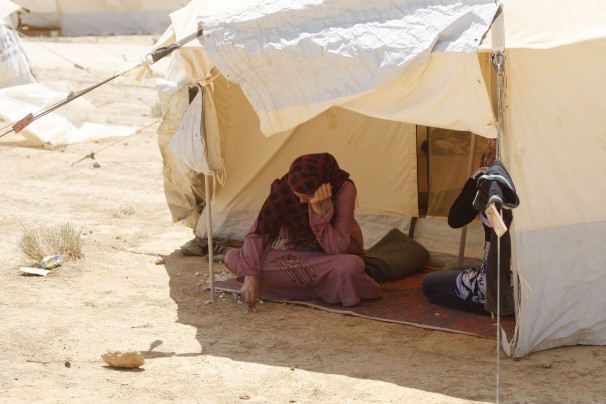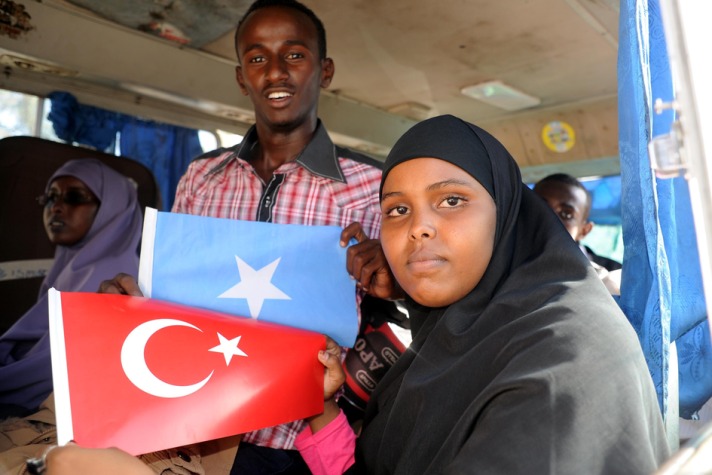Created little more than a year ago, the Zaatari refugee camp in Jordan has grown into the country’s fourth largest city and as the conflict in Syria continues, so will expansion of the camp. The various humanitarian organizations tasked with running the camp have been provided with substantial financial assistance by numerous countries. Canada alone has contributed $158.5 million to various humanitarian assistance efforts in Syria and surrounding countries since January 2012. With three times the original intended capacity living in the camp, the international administrators are not only faced with concerns of food and other essential supplies, but also the equally pressing issue within the camp of sexual assault and gender-based violence.It is imperative that gender-based violence be effectively addressed within the camp to ensure that the needs of women affected are met.
[captionpix align=”left” theme=”elegant” width=”250″ imgsrc=”http://natoassociation.ca/wp-content/uploads/2013/08/04jordan-map-articleInline.jpg” captiontext=””]
The different experiences that men and women have during conflict are well documented. Women face increased risk of sexual assault and harassment, experience greater restriction of mobility, and have greater difficulty accessing food and other essentials. This is especially true with regards to conflict in regions like the Middle East where gender discrimination is common. The situation of displaced women in refugee camps reflects these conditions. This issue is increasingly pressing due to the continued displacement of people, particularly women, as a result of the Syrian conflict and one that must be critically examined by both the international community and the internal camp leadership.
General conditions in the Zaatari camp have improved since its formation. For example, enhanced visibility at night due to more reliable electric networks has increased protection from assault at night. However, this is by no means the answer to problems of sexual assault and harassment that many refugee women face every day. There is still much work to be done to specifically target and improve the conditions of Syrian women refugees in the camps. An assessment conducted by UN Women on Syrian refugees in Jordan found that many girls have been forced into early marriages as a mode of protection from the widespread sexual abuse, with as many as 33 per cent of the participants in the assessment married when they were still children. The UN Women study also reveals a lack of services for survivors of gender-based violence (such as health services and psychosocial counseling) and a lack of awareness of such services even where they exist.
The situation is no less grave within Zaatari. Women have experienced sexual harassment by gangs of young men while waiting in line for food or for use of public latrines, and rapes have been reported. Numerous families, feeling unable to protect their female family members from the sexual harassment and rape within the camp, have arranged marriages to protect them.
Despite the best efforts of the camp leadership, they are unable to solve this issue on their own and may in fact be hindering its solution through their direct participation. According to Kilian Kleinschmidt, the director of Zaatari camp, much of the refugee population in Zaatari view the leadership as elites, akin to the Assad regime that is seen by many as a organization of oppression. Having escaped a country dominated by a privileged and controlling group, it is understandable that the Syrian refugees may be reluctant to continue to have many aspects of their lives dictated by yet another group of outsiders. This makes many of the leadership’s best-intentioned efforts futile.
It thus stands to reason that in order for victims of gender-discrimination to be reached most effectively, or indeed even at all, there must be increased involvement of other Syrian refugees who have survived similar situations. This would take the place of aid provided by those who may be altruistic, but have not lived through the difficulties that the Syrian refugee population has faced. What those directing humanitarian organizations within the camp can do is find ways to facilitate action from the refugees themselves and encourage Syrian women to take part in these initiatives. There are certainly numerous difficulties to overcome for this to become reality, including various cultural and social barriers. However, it is not impossible. For instance, UNHCR is already working through imams to promote messages of non-violence within the camp and have organized camp elections. Since women in other refugee camps, such as the Kilis camp on the Syria-Turkey border, have already begun participating in such elections it is entirely possible that a similar situation could occur within Zaatari.
Although there might be a shortage of services such as psycho-social counseling and legal support to survivors of gender-based violence, the use of these services is very likely limited by the restricted mobility of women in Syria and the heightened idealizationof honour in Syrian society. Making a conscious effort to ensure that those providing such specialized services are predominately women is a good first step in ensuring that these efforts reach greater numbers of affected women. Organizations who are currently providing these services (like UNHCR) should focus on recruiting the help of other Syrian women as an important second step. Not only would the inclusion of these women increase the likelihood that those who need aid get it, but would also see women placed in a position of leadership within the refugee community, strengthening their role within their communities. This in turn could have a positive impact on the rate of gender-based violence (and other forms of violence) within the Zaatari refugee camp.
In order to most effectively combat the grave problem of gender-based violence within the Zaatari refugee camp and other camps like it, humanitarian assistance groups must consciously involve Syrian refugee women in their efforts. Doing so is the only way to ensure that the various specialized services available to victims reach the largest amount of people within the Syrian refugee camps.




